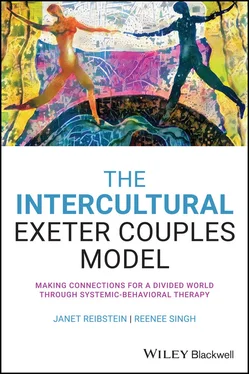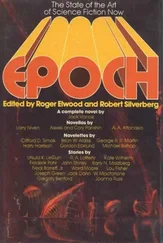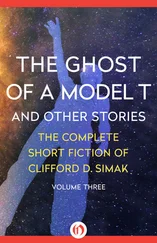The couple's maintenance cycle has as its focus how the interactive cycle of responses to each other maintains whatever the presenting problem may be. (In the case of its use in the training clinic, this was depression). Its assumption is that this cycle maintains the problem, most often unwittingly. Indeed, often couples who come in for treatment of a problem have a caring, loving relationship, yet are unwittingly doing behaviors and/or making distorting assumptions about what the other wants, needs, thinks, and feels out of benign motives that in fact maintain the presenting problem. Examining the maintenance cycle asks what it is—perhaps unwittingly—in a couple's interactions that are maintaining the symptom. In this the model is purely systemic and differs from many other forms of the use of couples therapy, in which couple distress is assumed or meant to be the presenting feature to qualify for couple intervention. In the EM and IEM the couple may be very supportive of each other, unwittingly maintaining unhelpful things. Unlike many other forms of couples therapy, to use the model, therefore, couple dysfunction is not a prerequisite; in fact, just being in a couple is the only one.
Couples were seen in the University of Exeter clinic mainly for from 6 to 18 sessions for treatment of depression. Trainees in the EM from outside the university brought it into use to treat other issues. These were those that present within the NHS IAPT (Integrated Access to Psychological Therapy) services; private therapy treatment for couple dissatisfaction, sexual problems, and other couple issues; within a pilot treatment program for alcohol and substance abuse; in NHS CAMHS—Children and Adolescent Mental Health Services—(for the treatment of couple dysfunction within family therapy settings); and in outpatient services such as crisis intervention services and older adult services.
But, as we have said, until recently neither an interculturally‐based site nor practice have existed within the EM. The EM as initially constructed, needing to be built entirely upon validated interventions (either by gold‐standard RCTs or by Expert Reference Group: two high, but different standards, of validation) left out attention to culture explicitly directed through any of its interventions. The fact, in itself, that neither the NICE survey nor the ERG one found a “best practice”—at the very least, intervention that focused upon intercultural issues—is a sad comment on our dominant culture's myopia.
So, jettisoning the need to have a model that conforms to the absolute highest standards of research practice was an inevitable outcome for the next phase of development of the EM. Otherwise we could not keep the EM in line with either attention to the fact that we are a global community or with society’s current societal needs—in particular in geographical areas in which there is high intercultural marriage and cohabitation. We wished to move it to a higher ethical standard of practice which would accord with those needs. Indeed, the authors believe that it is current “best practice” to include the multicultural dimension. What has been yielded is The IEM.
THE INTERCULTURAL EXETER MODEL
The IEM gives practitioners a systemic‐behavioral way to focus on the cultural context of a couple's life, and a method to bring in this necessary focus of so many couples today.
This version of the EM, as in the original one, does not assume pathology within the interactions, nor make an assumption of pathology about the inherent difficulties in uniting different cultures. Instead, it assumes these differences are often unwitting but that they can maintain problems. It highlights the cultural differences so that they can be brought into focus. This is so couples can name and recognize and empathize with each other about the unique challenges that these differences bring. These reside within a cultural context in which there may be differing values and beliefs that bring about different expectations around behaviors within life together. They may also reflect variations within the couple's background and actual cultural conditions—for instance, around sociopolitical differences and economic inequality. It is imperative, given these potentially powerful differences, that therapists be able to help a couple unearth how they affect interactional processes.
However, it is also imperative that therapists know how to guard against the opposite problem of not attending, unearthing, and understanding: pathologizing—that is, to guard against assuming that whatever the problem is, it is always related to intercultural/interfaith differences.
THE INTERVENTIONS OF THE INTERCULTURAL EXETER MODEL
Many of the interventions that are made within the adapted EM to fit intercultural work utilize the original methods, but direct the therapists to asking specific questions, using them around culture. However, just as we ask “what is the presenting problem” so that we can clearly delineate the maintenance cycle of that problem (e.g., “depression” with “depressive symptoms” at the top of the maintenance cycle), the IEM explicitly starts with “what is an intercultural couple?” Is this couple one which is facing issues that arise or are colored by being from different cultures? Sometimes the couple self‐define as “intercultural,” and sometimes the answer to this question is obvious, at face validity: the couple clearly come from different cultures or faith. But sometimes the answer is not obvious: sometimes intercultural couples might appear to be from the same culture, but because an earlier, different, generation's very strong influence, for instance, has dominated in one member's upbringing but not the other's, a different culture is having a real but not necessarily clearly observable impact. Or sometimes having been raised even partially within a different country or education system, or coming from a stronger versus a weaker faith system within the families‐of‐origin, can mean there are not obvious but still very strong and active cultural differences playing out within a couple.
The central theme in interculturally influenced therapy is to create a shared meaning to the extent that it is possible, while tolerating the differences. To achieve this we use two particular interventions designed to address culture, but also we build questions from interventions within the EM to access cultural ideas and potential tensions or dilemmas.
These are such questions as what is the meaning of home, for instance, or the loss of home for displaced cultures; or the important but different and differently valued practices of religion and culture; or the beliefs of religion and culture associated with distress or mental health difficulties; or experiences of racism, disadvantage, and expectations of protection; or of differences in parenting styles and ways of relating to extended families. These are now, through the development of the intercultural part, specifically built into the extant EM interventions. For example, the IEM will be asking therapists to help couples explore what is the “script” around mental health or their present distress, within each of the cultures, or, while designing a family genogram the therapist will be asking about such things.
But in addition to building specificity within the existing interventions, there are two specifically culturally focused methods that we also use. These are discussed in the following sections.
THE CULTURAL GENOGRAM: A KEY INTERVENTION
The cultural genogram (Hardy & Laszloffy, 1995) enquires about the cultural, ethnic, and religious heritages of the people explicitly within the genogram. Within intercultural work, this is “best practice” intervention and as such it has become a key intervention within the IEM.
Читать дальше












